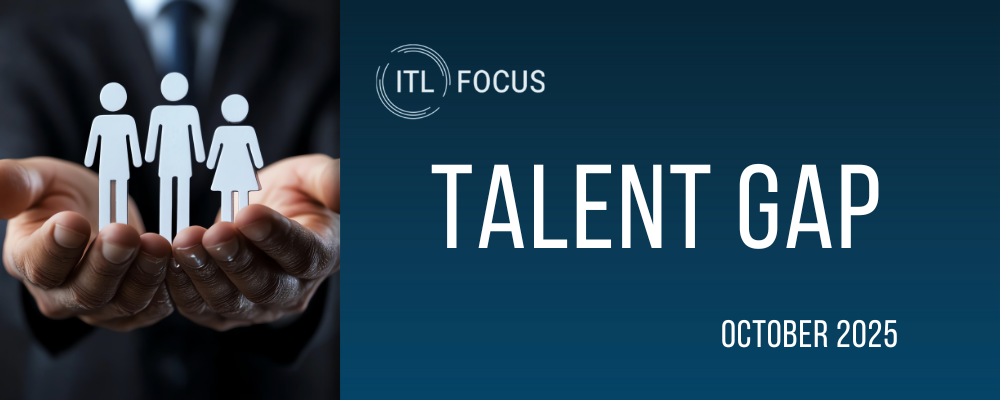Recently, after 42 years on the job, Laura Whitman closed her office door at a regional insurance provider in Ohio for the last time. She was the go-to expert on complex risk underwriting, knowledge no internal system could fully capture. Her company hosted a retirement party. But they still haven't filled her role.
The insurance industry has known this was coming. Its workforce has been aging for decades, and now, the wave of retirements is here. Nearly 400,000 insurance professionals like Laura are expected to leave the field by 2026. That's a staggering loss of institutional knowledge, capacity, and experience.
But younger workers aren't exactly lining up to take their place. According to a recent report, 67% of Gen Z consider insurance boring, and fewer than one in three find it appealing—ranking it last among 12 industries. That perception gap matters. The field is shifting fast toward roles in data analytics, cybersecurity, and AI, and new skills and fresh talent are critical to keep up.
Fixing this isn't just about posting more jobs or offering bigger signing bonuses. It requires a fundamental shift in how insurers attract, develop, and grow the next generation of talent.
Why early career talent isn't seeing insurance (yet)
Traditional recruiting in insurance has long relied on job boards touting stability, campus visits to business schools, and internal referrals. That approach worked when talent flowed in passively. Today, it's invisible to the people insurers most need to reach.
Gen Z, on track to become the largest generation in the workforce by 2035, wants careers that offer purpose, growth, and social connection. Few associate those traits with insurance. At the same time, insurers need talent skilled in AI, cybersecurity, and analytics, roles that young professionals may not even realize exist in the sector.
It's more than a branding problem. Many organizations still center recruiting on external hiring for narrowly defined roles, without showing candidates where they can grow. That limits who applies and what they imagine possible once they're in the door.
From filling jobs to building careers
To compete for talent, insurers need to stop filling vacancies and start building visible, viable careers. That begins by showing candidates where the industry is going, not just where it's been, and by backing that up with real investments in internal mobility, skill-building, and development support.
If traditional recruiting isn't delivering the workforce insurers need, then the next step is clear: attract new talent by showing what's possible, then grow it from within. Many frontline and mid-career employees already understand the business and the customer. What they need is a clear, supported path forward.
Ultimately, the wave of retirements goes beyond a hiring challenge. It presents an opportunity for business continuity and transformation. As experienced professionals exit, insurers have the chance to rethink how critical knowledge is captured, how modernization efforts are staffed, and how emerging talent is developed. With digital-native competitors gaining ground, those who invest now in building a resilient internal talent pipeline will lead the industry forward. Workforce development isn't just an HR initiative, it's a lever for long-term competitive advantage.
Making career paths real, and accessible
Tailored career pathways can help insurers both attract and grow talent, especially in fast-changing areas like digital claims, analytics, and cyber risk. These paths don't always require degrees to begin. Many start with certifications, licensing support, or short-form programs that build job-ready skills.
For some, they're a launchpad into a degree. For others, they offer a direct path to promotion. Think:
- Data analytics certificates for claims specialists
- Compliance credentials for service reps
- Digital tools training for marketing assistants moving into product roles
When programs are stackable, visible, and linked to advancement, they help employees see a future inside the organization and give insurers a scalable way to meet future workforce needs.
The good news? Many insurers already have structured role levels and internal promotion cultures. What's often missing is the connective tissue: visibility, support, and educational investment.
Building workforce readiness from the inside out
Workforce development only works when it's grounded in what employees actually need to grow. That means moving past one-size-fits-all training toward people-centered development aligned with business priorities.
Start with your people. Some employees want to move up. Others want to reskill into a different role. Others want to deepen where they are. The right education strategy gives them all a path.
Second, make sure these opportunities are accessible. Many of the workers who could benefit most from career development, including those in high-turnover or underserved segments, are also the least likely to have time, money, or flexibility to pursue traditional degrees. That's why programs need to be designed with real-world constraints in mind: shorter formats, stackable credentials, online options, and upfront tuition support.
Lastly, track what matters. Course completions are useful but not the whole picture. Focus on outcomes like retention, internal promotion, and movement into future-critical roles. That's where you'll see the impact.
Taken together, this kind of approach delivers on both sides. Employees get a clear, supported path to growth. Employers get a stronger, more resilient talent pipeline. And the industry starts to look less like it's falling behind and more like it's building for what's next.
Now is insurance's moment to step in
In 2025, white-collar job cuts are reshaping early-career opportunities. Industries that Gen Z rank as most appealing—tech, media, entertainment—are not offering the same volume of entry-level roles they once did.
That's where insurance can step in, as a stable, future-facing industry with the potential to offer real career paths, not just jobs.
The cost of doing nothing is steep. If roles like Laura's go unfilled, or are filled without the right capabilities, insurers risk more than backlogged claims. They risk customer churn, compliance failures, and stalled digital transformation. According to McKinsey, organizations that invest in skills transformation are up to 2.5 time more likely to succeed in transformation initiatives. Conversely, the loss of institutional knowledge can cost companies millions in operational inefficiencies, rework, and delayed innovation.
The coming retirement wave is more than a moment of transition. It offers a chance to reshape what a career in insurance looks like. By focusing on upward mobility and building accessible, future-aligned learning pathways, insurers can attract the talent they need and finally tell a story that resonates with the next generation.






